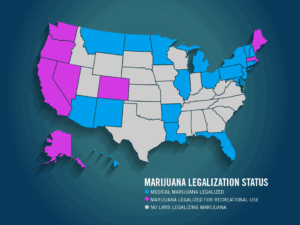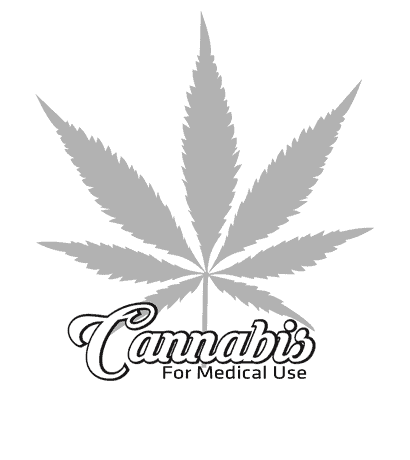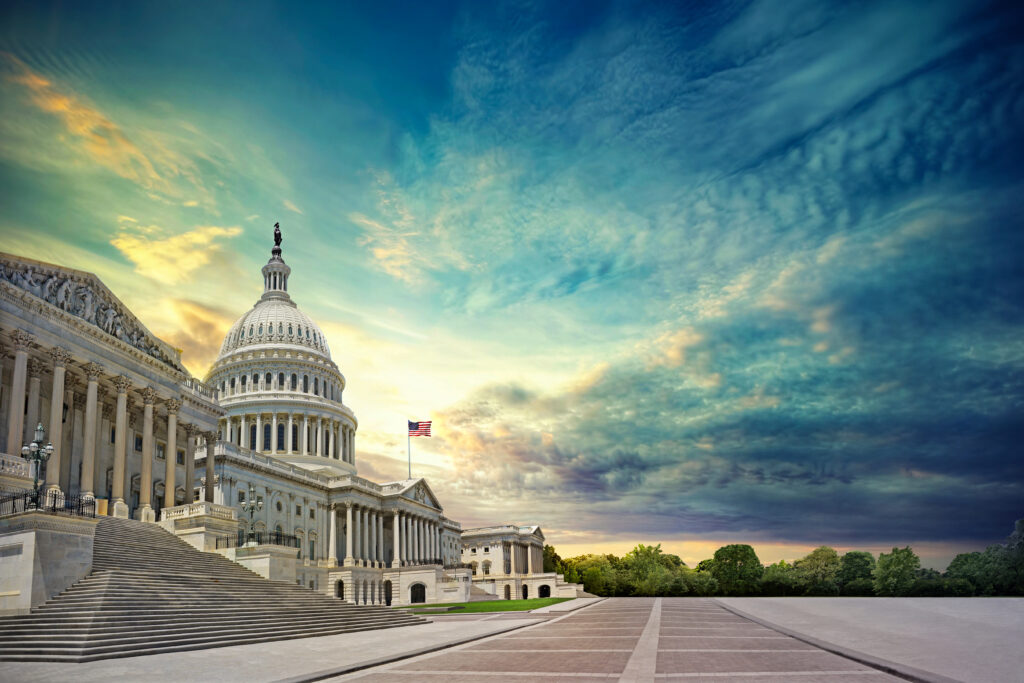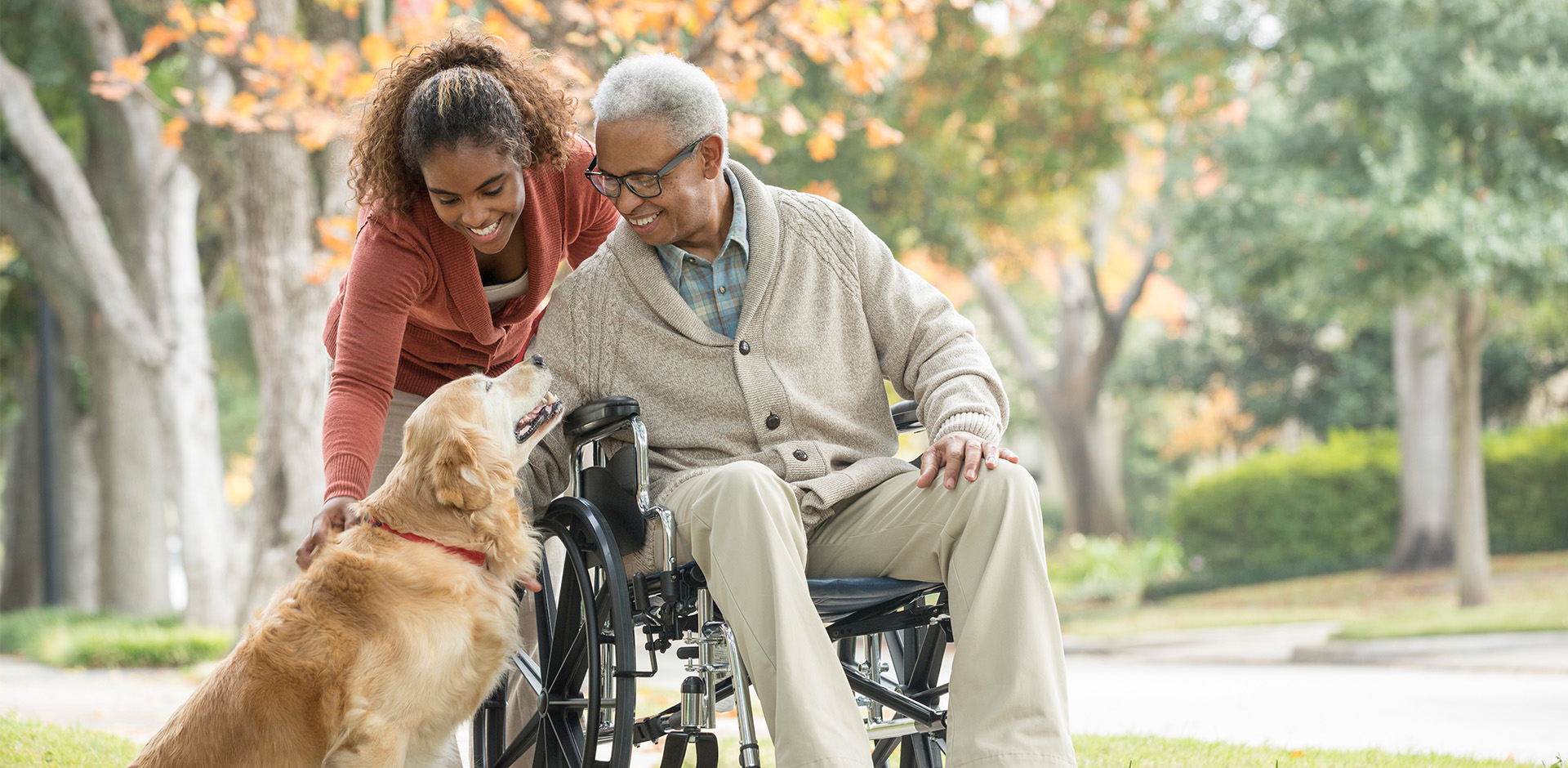Medical Cannabis for Peripheral Neuropathy Treatment – Part 1 of 5
This is the first of five articles on medical cannabis and its use as a peripheral neuropathy treatment.
The Status of Legalized Medical Marijuana and What is Dispensed
by Dr. Rosemary Mazanet
Before reviewing the history and science behind the use of cannabis for various medical conditions, peripheral neuropathy treatment in particular, it is important to realize that at the end of voting on November 8, 2016, not only did we have a new president elect but the electorate of now more than half of the states in the union approved the use of cannabis for state qualified medical conditions (Figure 1). This move to allow the medical use of marijuana is supported by a majority of doctors in the U.S. That said, cannabis has not been analyzed, tested, or approved by the FDA, and the product is still considered on a national level (by the DEA) to be under schedule 1 rules and regulations, meaning that it is a strictly controlled substance subject to the same federal felony rules for misuse as heroin.

With the addition of four states on November 9, 2016, (Florida, North Dakota, Montana and Arkansas), voters have passed bills allowing the medical use of cannabis in 29 states and the District of Columbia. Individual state laws govern the growing, dispensing and medical use of cannabis to different extents for different conditions.
The voters of a different four states (California, Maine, Massachusetts and Nevada) legalized the recreational use of cannabis in November, which doubled the total number of states to eight that allow recreational cannabis.
This regional legalization of marijuana (cannabis) has fueled a growing acceptance of marijuana (whether warranted or not) as a treatment option for a number of conditions. Despite criticism of the programs (whether for prescribed medical conditions or recreational), there is a real science behind the use of cannabinoids for therapeutic effects (and some undesirable side effects) by binding to specific receptors on the surface of cells. The commercial availability of medical cannabis has moved patient usage quickly, and many unanswered questions remain as to how to best utilize these cannabis product offerings. In this interesting nation vs. state situation, individual states willing to permit the cultivation and sale of medical cannabis are able to choose their approved conditions, allowable formulations, and timing of refills. Because medical cannabis is not an FDA approved product, it is not technically “prescribed”, therefore physicians are given little direction by the states on which products and ratios might be appropriate for their patients. There is limited information on the side effects of using this product and there may be associated health risks as a result of using marijuana for medical use as a treatment option.
Is medical cannabis substantially different from recreational cannabis?
The answer to this (like most things cannabis related) is that it depends on the state in question. In some states, what can be purchased under the minimum standards for medical cannabis might be identical in form to recreational marijuana because both are derived from the cannabis plant (called leaf product). However, one can generalize that medical cannabis has a higher level of testing standards required to meeting the medical standards for dispensing. These standards do not always apply to recreational use. But even within a state, the product offerings and the company standards will differ between dispensary companies. Most states do require strict accounting of marijuana products, from seed to sale, however (Figure 2). States such as New York do not permit the sale of agricultural leaf for medical use, and Figure 3 illustrates the production process and final product for medical cannabis tincture or oil in NY.


This is the first in a series of five articles on medical cannabis by Dr. Mazanet for the Foundation for Peripheral Neuropathy:
- The Status of Legalized Medical Marijuana and What is Dispensed
- The History of Cannabis Use
- How Does Cannabis Work?
- The Benefits and Effects of Medical Cannabis
- How to Use Medical Cannabis
About the author: Dr. Rosemary Mazanet, MD, PhD, was trained in Internal Medicine (Brigham and Women’s Hospital, Boston) and Medical Oncology (Dana Farber Cancer Institute, Boston), and has been active in the Biotechnology community for the last 30 years. Currently she is involved in strategic drug development and is the head of the Scientific Advisory Board for Columbia Care, Inc, a company that grows and dispenses legal medical cannabis in nine states.






